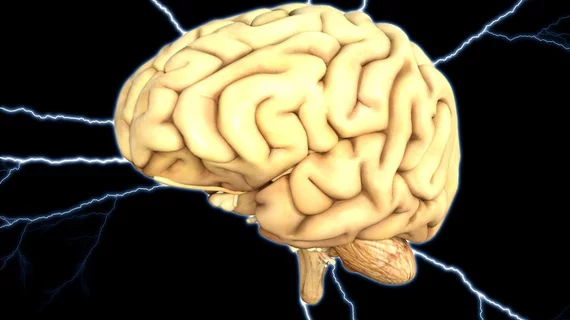PET/MRI body imaging with full head scan identifies severe brain abnormalities
Routine body imaging with FDG PET/MRI technology provides a wealth of diagnostic information for physicians to better manage oncology patients. A study recently published in the American Journal of Roentgenology, however, suggests that not additionally scanning the entire head may lead to missing brain abnormalities.
"The routine PET/MRI protocol that images the area from the skull base to the mid-thigh may miss many important brain abnormalities that are easily detected with PET/MRI body sequences," the researchers wrote. "These abnormalities could change patient management or alter patient prognosis."
Researchers led by Robert Matthews, MD, a radiologist at Stony Brook University School of Medicine in Stony Brook, New York, collected FDG PET/MRI whole-body scan images that included the head from 269 patients at a mean age of 57 years.
Images of the brain were reviewed by a nuclear medicine physician and neuroradiologist, the researchers wrote, who recorded abnormal FDG uptake, standard uptake value, lesion size and MRI signal characteristics.
Of the 269 patients who had a PET/MRI whole-body scan including the head, 37 patients (13.8 percent) had abnormal brain findings. A total of 16 patients (5.9 percent) had vascular disease, nine patients (3.3 percent) had posttherapy changes and two patients (0.7 percent) had benign cystic brain lesions, according to the researchers.
Researchers also found that 12 patients (4.5 percent) had "serious nonvascular brain abnormalities", including cerebral metastasis and pituitary adenomas.
"Perhaps the most significant example outlining the importance of including the head on routine whole-body PET/MRI was the case of a partially thrombosed, enlarging aneurysm that was detected in a 64-year-old woman with metastatic breast cancer," the researchers wrote. "Although this patient would have received routine brain imaging for evaluation of the aneurysm and metastatic brain disease, PET/MRI allowed intervention for this patient whose condition was asymptomatic before more serious effects occurred."
Overall, the amount of time it requires to include the entire head in a full body FDG PET/MRI scan is not substantial, the researchers noted. By adding three to five minutes more of imaging time and two to three minutes more for the radiologist to review the images, the researchers believe that the method may provide added clinical value to the management of oncology patients.

